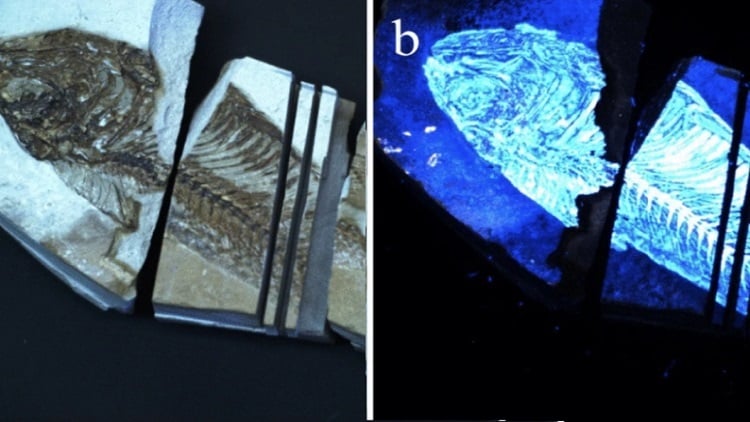S. Himmelstein | July 07, 2022
 Biofinder detection of biological resides in fish fossil. (a) White light image of a fish fossil, (b) Fluorescence image of the fossil obtained by the Biofinder, highlighting biological material. Source: Anupam K. Misra et al.
Biofinder detection of biological resides in fish fossil. (a) White light image of a fish fossil, (b) Fluorescence image of the fossil obtained by the Biofinder, highlighting biological material. Source: Anupam K. Misra et al.
The discovery of extraterrestrial life may depend on deployment of a portable device that detects organic residue in fossils tens of millions of years old.
The Compact Color Biofinder system engineered by researchers from the University of Hawai‘i at Mānoa and NASA Ames Research Center detects biomarkers as evidence of ancient life in rocks and fossils. Trace quantities of organic matter can be measured in a large area at video speed from a distance of a few centimeters to 5 m. In field tests conducted throughout the western U.S., the instrument was demonstrated to distinguish between mineral phosphorescence and organic fluorescence from standoff distances in daylight conditions with short measurement times.
As explained in Nature Scientific Reports, the compact device shines a laser onto fossil samples and excites fluorescence in organic materials that may remain, such as amino acids, proteins, lipids and microbes. The results are captured on video in real-time at 20 frames per second, and a short exposure time allows it to block out daylight or luminescence from non-biological minerals.
The researchers contend that such fluorescence imaging will be critical in future NASA missions to detect organic materials and the existence of life on planetary bodies.
“The Biofinder’s capabilities would be critical for NASA’s Planetary Protection program, for the accurate and no-invasive detection of contaminants such as microbes or extraterrestrial biohazards to or from planet Earth,” said Sonia J. Rowley, University of Hawai’i team biologist.
